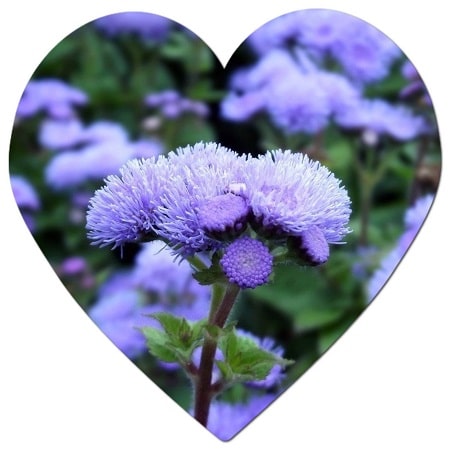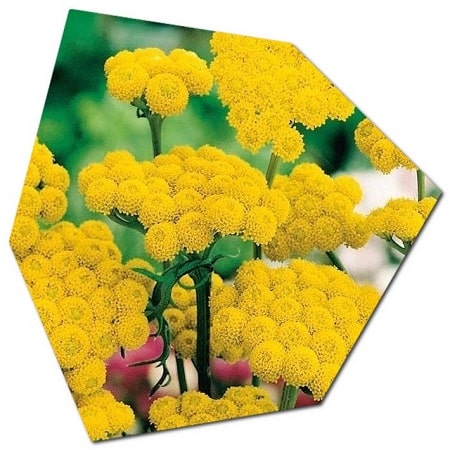The Ageratum flower is native to Central America and South America. It has a bicolor flower in shades of blue and purple. When looking at the general appearance of the flower, it has a ball-shaped shape with many branches. As for the way of seeding, it doesn’t have different options as in other plants. Ageratum flower is a plant that can only grow by seed.
What is the Ageratum flower? Ageratum is a herbaceous annual plant. It has a round cross-sectioned, green-colored stem, highly branched, heart-shaped and green leaves with toothed edges. It has small purple, blue, white and pink flowers that bloom in clusters until late spring.

To grow the Ageratum flower, you need to make sure that its soil has a loose structure. The following methods you should apply for the care and watering of the Ageratum flower; Ageratum flower, which grows easily in loose soil, should be watered abundantly after being placed in the pot in March. When it starts to sprout in June, it should be watered 3 or 4 times a week. There is no harm in the soil of the Ageratum flower being a little calcareous. If you make sure that the soil is loose, Ageratum will grow easily in a short time. The flower may be damaged as a result of the cold weather towards February. You can easily grow your flower at home during the cold months. Because this flower is not resistant to cold. Flowers should not be expected to grow and develop. Like all flowers, flowers that cannot withstand the high temperatures of the summer months should not be left without water. Ageratum flower is a plant that requires watering every two days. For this reason, it is necessary to check regularly in the summer heat and make sure that the soil does not dry out. Since it loves the sun, if you put it in sunny and warm places, it will grow in a short time. Usually, most flowers are damaged by direct exposure to the sun, whereas the Ageratum flower grows quickly.
The Ageratum, commonly known as flossflower, is a genus of annual and perennial herbaceous plants in the Asteraceae family. These plants are known for their fluffy, button-like flowers in shades of blue, purple, pink, or white. Ageratum species are native to the Americas, particularly Central and South America. Here are some details about Ageratum flower care:
Characteristics of Ageratum Flowers:
- Flowers: Ageratum flowers are small, fluffy, and clustered, creating a “fuzzy” appearance.
- Colors: Common flower colors include blue, lavender, pink, and white.
- Height: Depending on the variety, Ageratum plants can range from compact, low-growing types to taller varieties.
- Foliage: The leaves are typically oval or heart-shaped, and the plants have a bushy growth habit.
Ageratum Flower Care:
1. Sunlight:
- Ageratum plants thrive in full sun to partial shade. They generally require at least 6 hours of sunlight daily for optimal growth and flowering.
2. Soil:
- Use well-draining soil that is rich in organic matter. Ageratum prefers slightly acidic to neutral soil pH.
3. Watering:
- Keep the soil consistently moist but not waterlogged. Ageratum does not tolerate drought well, so regular watering is essential, especially during dry periods.
**4. Fertilization:
- Fertilize Ageratum plants with a balanced, water-soluble fertilizer every 4-6 weeks during the growing season. Follow the recommended dosage on the fertilizer package.
5. Deadheading:
- Deadhead spent flowers regularly to encourage continuous blooming. This involves removing the faded flowers to promote the development of new buds.
6. Pruning:
- Trim back the plants if they become leggy or overgrown. Pruning can help maintain a compact and bushy shape.
7. Pest and Disease Control:
- Keep an eye out for common garden pests like aphids and caterpillars. Treat any pest issues promptly using appropriate methods, such as insecticidal soap or neem oil.
- Ageratum is generally resilient to diseases, but good air circulation and avoiding overwatering can help prevent issues.
8. Container Gardening:
- Ageratum can be grown in containers, making it suitable for patio gardens or balcony planters. Ensure the containers have drainage holes.
9. Companion Planting:
- Ageratum is often used in companion planting to attract beneficial insects like butterflies. Consider planting it alongside vegetables or other flowers to support pollination.
10. Overwintering: – Ageratum is typically grown as an annual in colder climates. In areas with mild winters, it may act as a perennial. In colder regions, it’s often replanted in the spring.
By providing the right growing conditions, Ageratum can reward gardeners with a profusion of colorful and fluffy flowers throughout the growing season.
Where is the best place to plant ageratum?
The best place to plant Ageratum (flossflower) depends on its sunlight requirements and the specific growing conditions it prefers. Here are some general guidelines for planting Ageratum:

- Sunlight:
- Ageratum thrives in full sun to partial shade. It generally prefers at least 6 hours of sunlight daily for optimal growth and flowering.
- If you are planting Ageratum in a region with hot summers, providing some afternoon shade can be beneficial to protect the plants from intense heat.
- Soil:
- Use well-draining soil enriched with organic matter. Ageratum prefers soil with a slightly acidic to neutral pH.
- The soil should not be waterlogged, as Ageratum does not tolerate overly wet conditions.
- Garden Beds and Borders:
- Ageratum works well when planted in garden beds, borders, or flower beds. It adds a burst of color and a soft, fluffy texture to mixed planting schemes.
- Ensure good spacing between plants to allow for air circulation and prevent overcrowding.
- Containers:
- Ageratum can be grown in containers, making it suitable for patio gardens, balcony planters, or hanging baskets.
- Use a well-draining potting mix and ensure that containers have drainage holes to prevent waterlogging.
- Companion Planting:
- Consider planting Ageratum alongside other flowers, vegetables, or herbs. It is often used in companion planting to attract beneficial insects like butterflies and bees.
- Borders and Edges:
- Ageratum’s low-growing and mounding habit makes it suitable for borders and edges in garden beds. It can create a colorful and uniform border when planted in mass.
- Cutting Gardens:
- Ageratum is a great addition to cutting gardens, providing blooms that can be used in floral arrangements. Plant it in an area where you can easily harvest the flowers.
- Rock Gardens:
- Some dwarf varieties of Ageratum can be suitable for rock gardens. Their compact size and colorful blooms add interest to these smaller spaces.
- Butterfly Gardens:
- Ageratum’s attractive flowers make it a good choice for butterfly gardens. Plant it alongside other nectar-rich flowers to attract butterflies.
When choosing the planting location, consider the specific variety of Ageratum you have, as different cultivars may have slightly different preferences. Additionally, local climate conditions should be taken into account to ensure the best performance and longevity of your Ageratum plants
